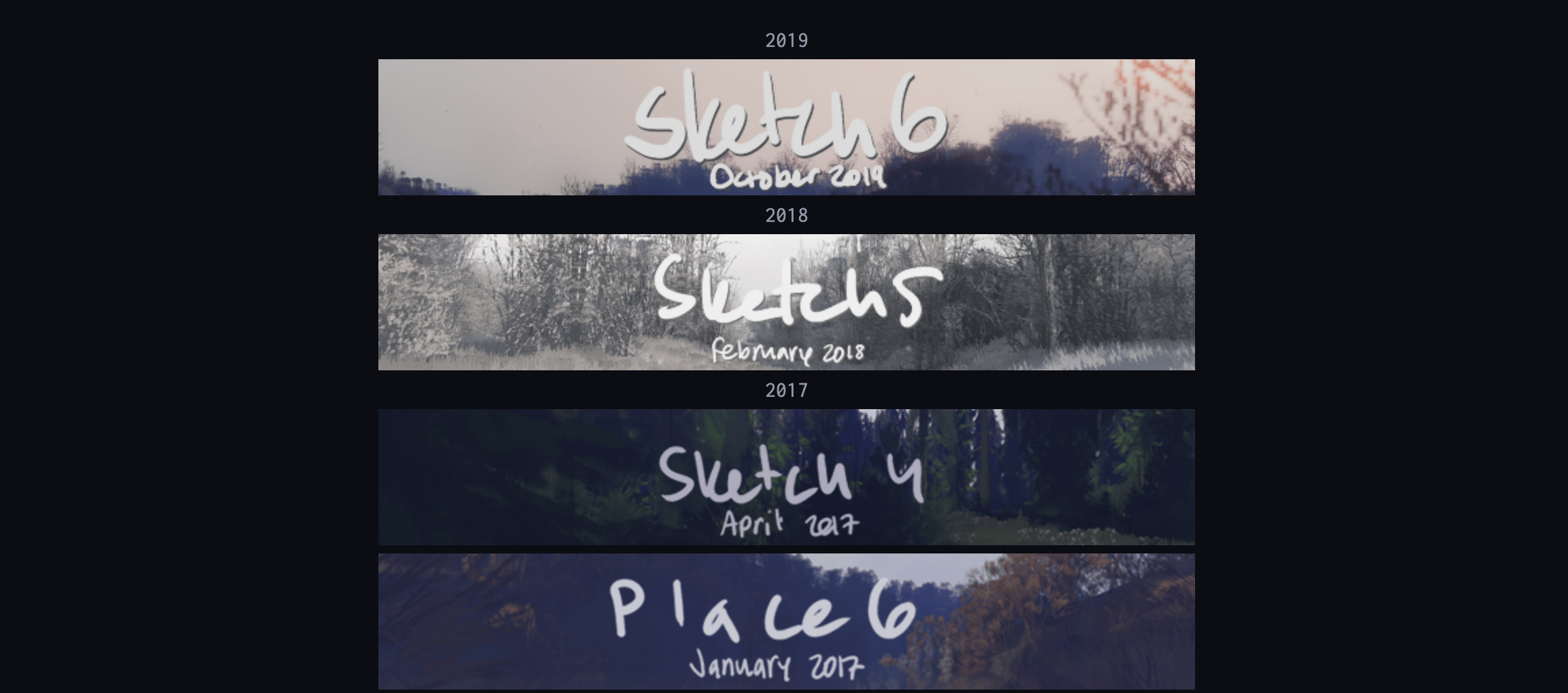For this week’s critical play, I played the game Places, which was a collection of free, unguided environments made by a tumblr blogger @ktch on web browsers for players to walk through and explore different world atmospheres. To play Places, I mainly navigated through Sketch 4, Sketch 5, and Place 6 to familiarize myself with its different terrains. I argue that the mechanics of a walking simulator game like Places proves that simplicity in gameplay mechanics can still result in an immersive and emotional, narrative experience. When walking through the different sketch worlds, I quickly realized that the fundamental mechanic was walking. At first, I began testing my keyboard keys to discover more abilities (ex. the spacebar meant for jumping, allowed me to hop around faster when used with the direction keys W, A, S, and D). However, after catching on that walking through the terrain in a controlled, slow pace was the appeal of the game, it was apparent that the constraint of walking was a deliberate choice that eliminated the distraction of more action-oriented gameplay. Through navigating the different sketches, I was able to appreciate and focus on the environmental storytelling of Places and even experience the thrill of nature survival through my computer screen. I was able to feel feelings of loneliness, thrill, and reflection through the visual and auditory cues of different lands as I navigated through fields, mountains, swamps, and rivers.
The first immersive detail that caught my attention was the auditory cues. I immediately noticed it as Sketch 5 opened for the first time on a new window and I could hear a light breeze that filled the room. The audio experience seemed really realistic to what one would hear on a calm day exploring wheat fields and short trees. Then as I began to move forward in every direction, I could hear my footsteps accompanied by a crunch on the floor that was quite accurate to the sound of stepping on twigs and unpaved ground. In Sketch 4, I noticed that as the screen started to look reflective and appear like water, my footsteps began to sound damp and eventually mimicked the noise of walking through water. The realistic visuals of shadow and reflection and the audio experience of walking through puddles and swamps made me feel extremely immersed as I played this game on my laptop in my room. It led me to imagine what it would be like to navigate unpaved woods alone during the daytime, and I actually started to feel the feeling of loneliness. Given that this would be my natural reaction to this realistic setting, it was intriguing that this simple simulation game could so accurately incite a feeling that otherwise wouldn’t have come up if the setting was merely being described to me or shown in pictures.
As I continued exploring different sketch worlds, I also thought about what it would be like to run into another player in this game. However, I think that the simple simulation game’s main appeal is its narrative of reflection, calmness, and discovery – which are all better accomplished as an individual rather than with company. The game designer’s deliberate choice to 1) not allow players to run 2) not see or collaborate with other beings and 3) exclude challenges or puzzles supports the idea that games like Places are meant to incite personal and emotional revelations and make players design their own narrative through nature.
This game created the aesthetics of narrative and discovery. I liked that there was no paved path told me where to explore next. I believe this was intentional because the lack of a beginning or end in the game also mimicked the true endlessness of nature in the real world. A mission that I took upon myself was find the “edge” and boundary element of this game. Given that it was modeled after an artist’s sketch, there was indeed a boundary/end of the simulation if I continued to walk straight in a certain direction. When I reached this part, the trees and grass illustrations would start to glitch, and I was left with seeing a blank sky, but due to the absence of visuals, it felt natural to return to a non-edge part of the game and continue exploring.
By focusing on individual, slow-paced walking as the primary mechanic, Places creates a meditative experience that allows for a deeper connection to outdoor settings and successfully recreates what one would feel in that environment if it were real.




